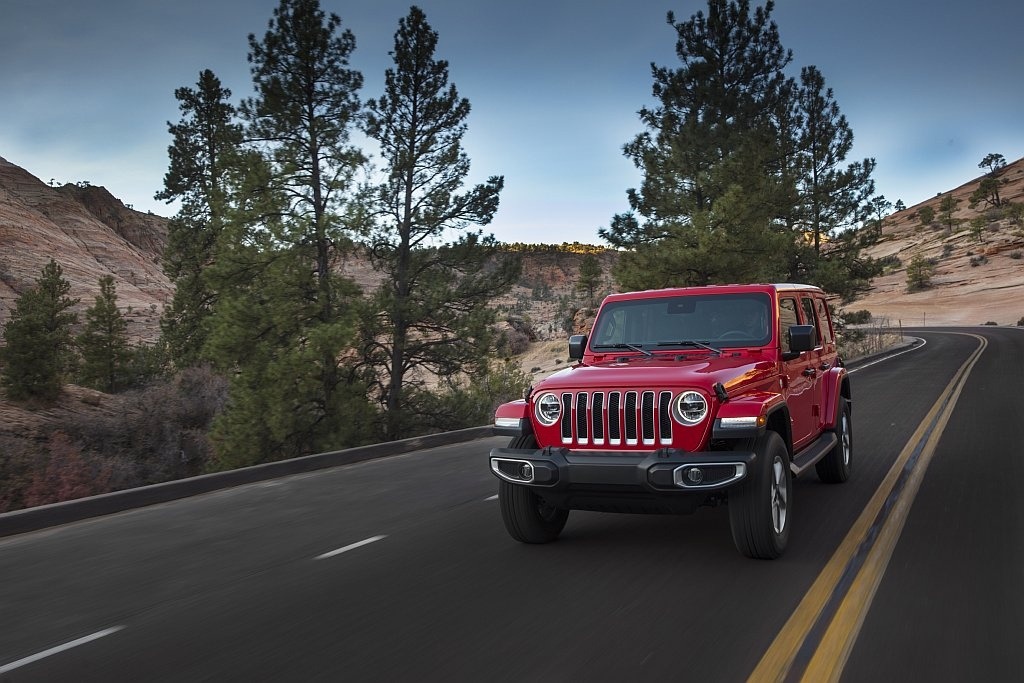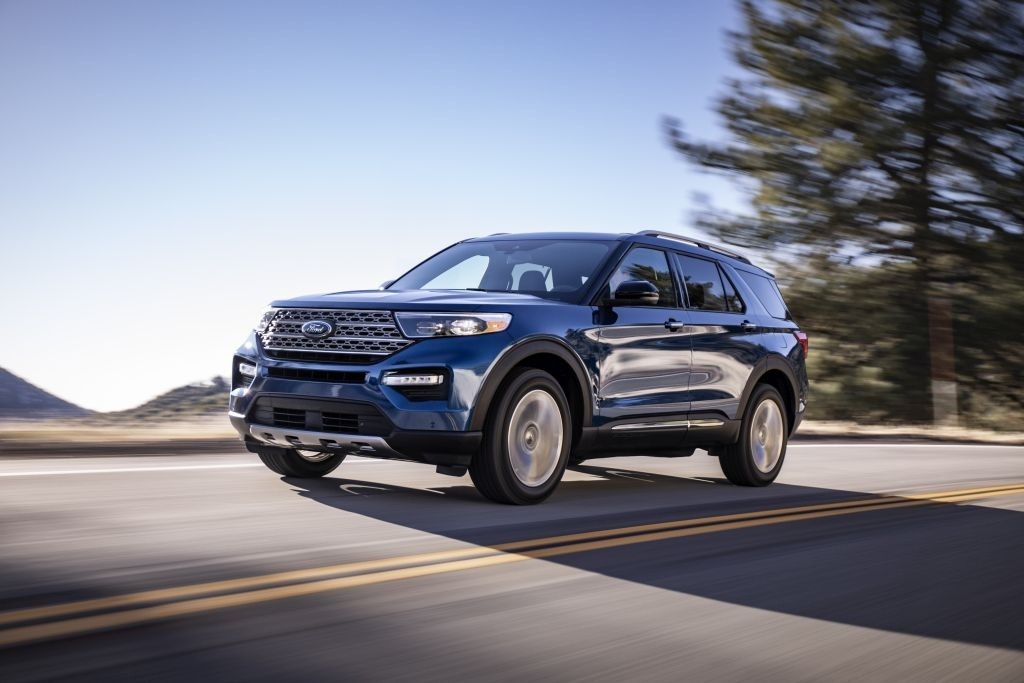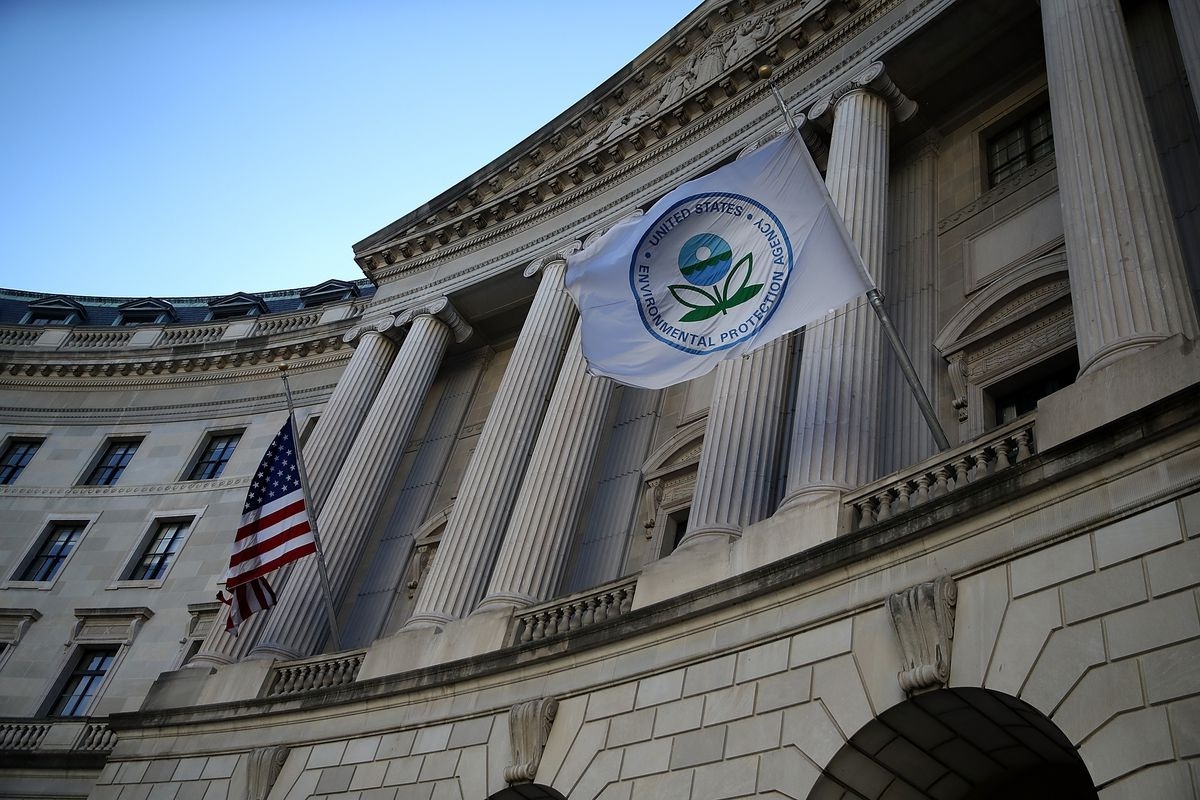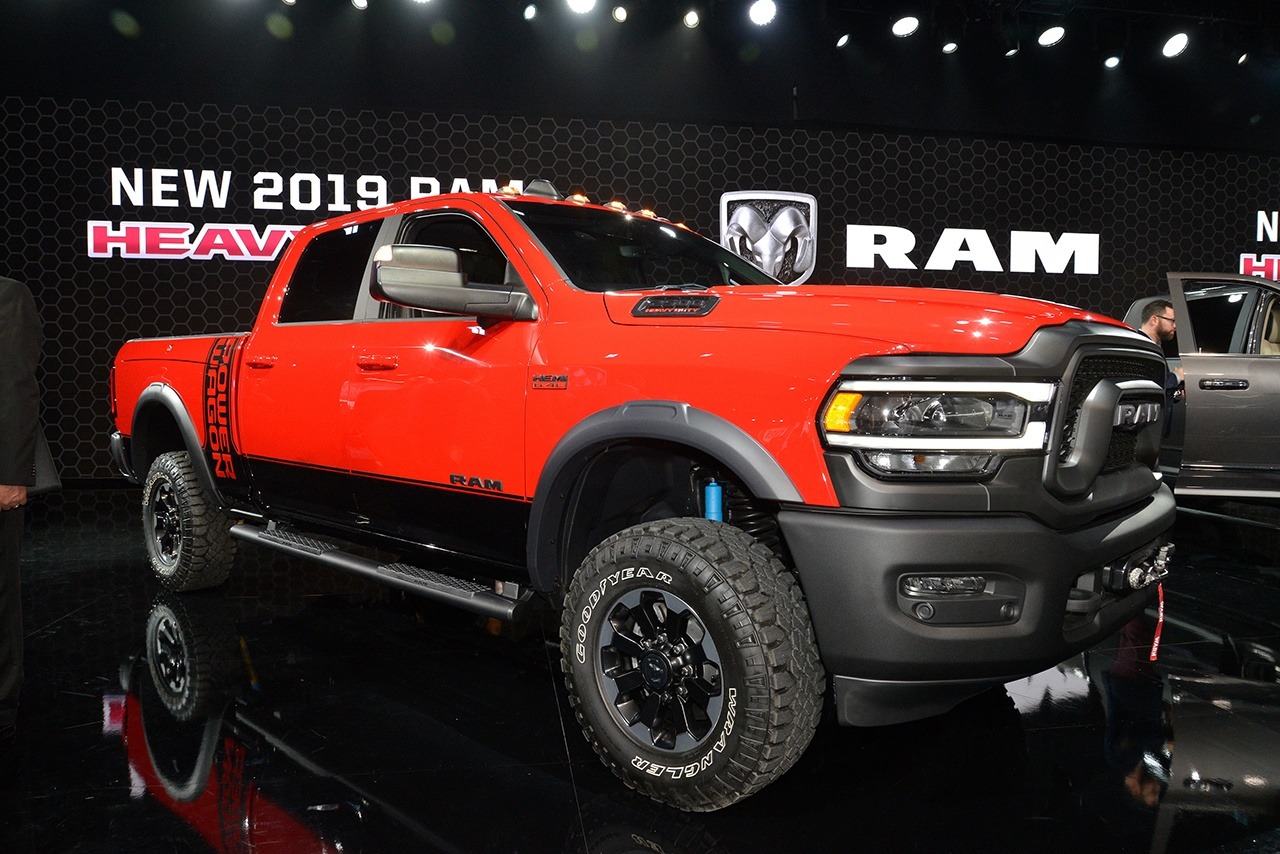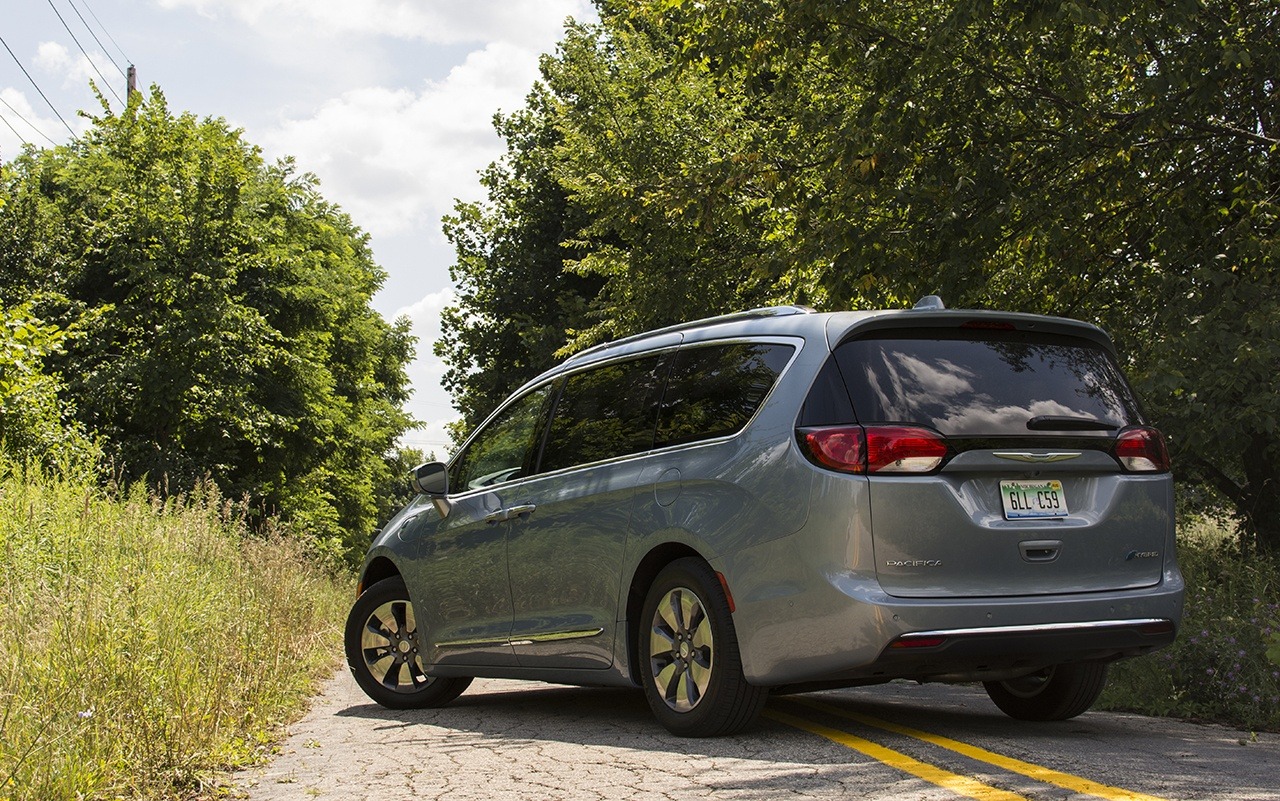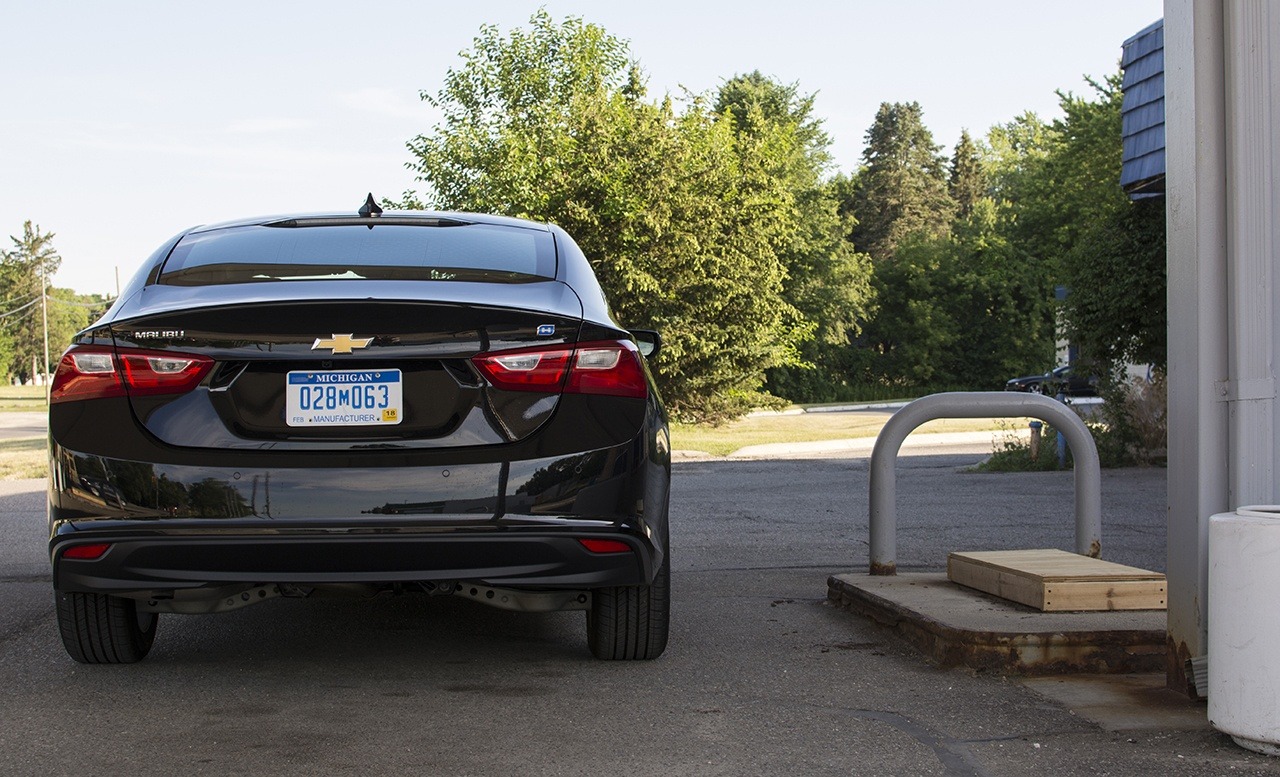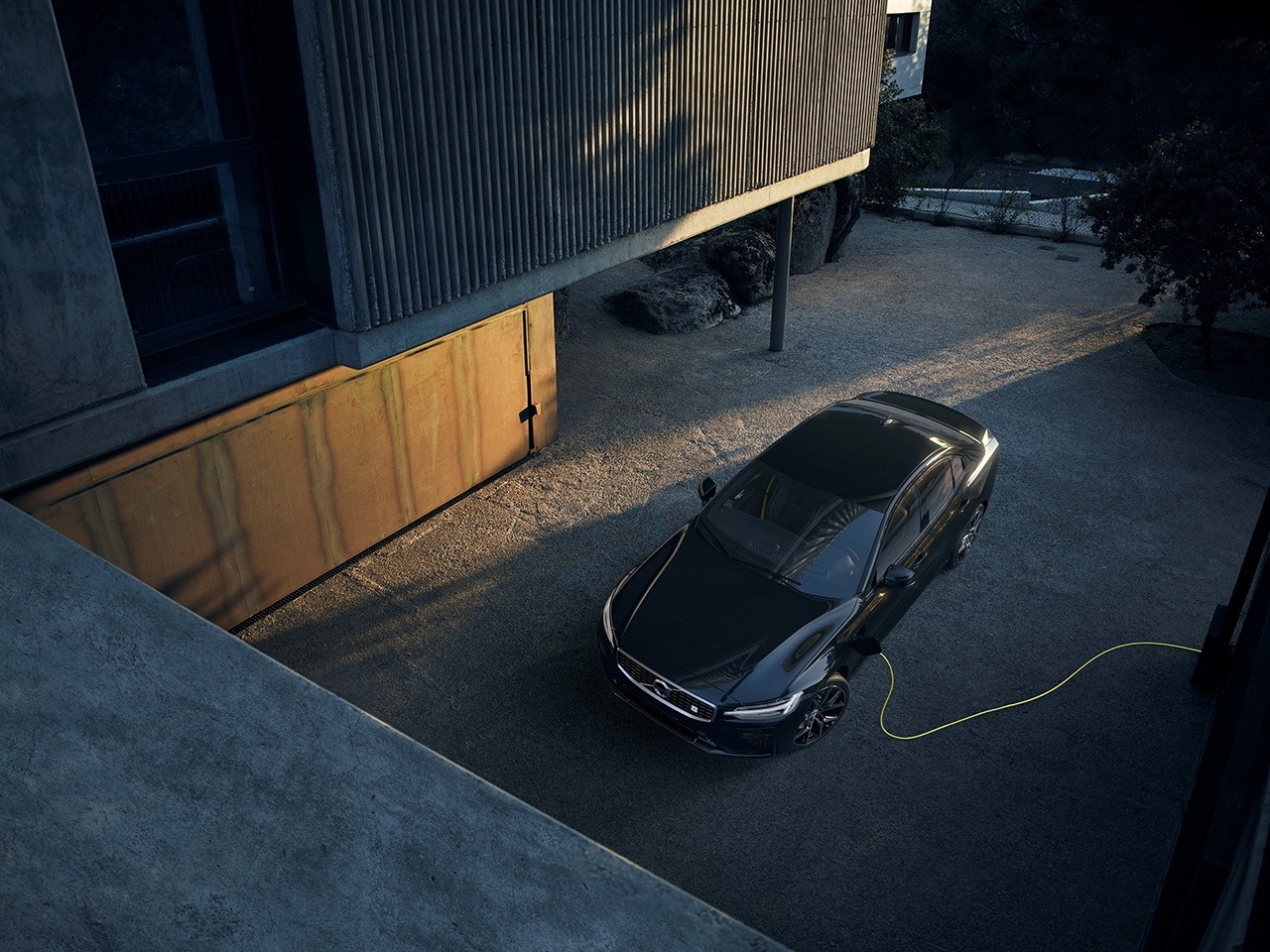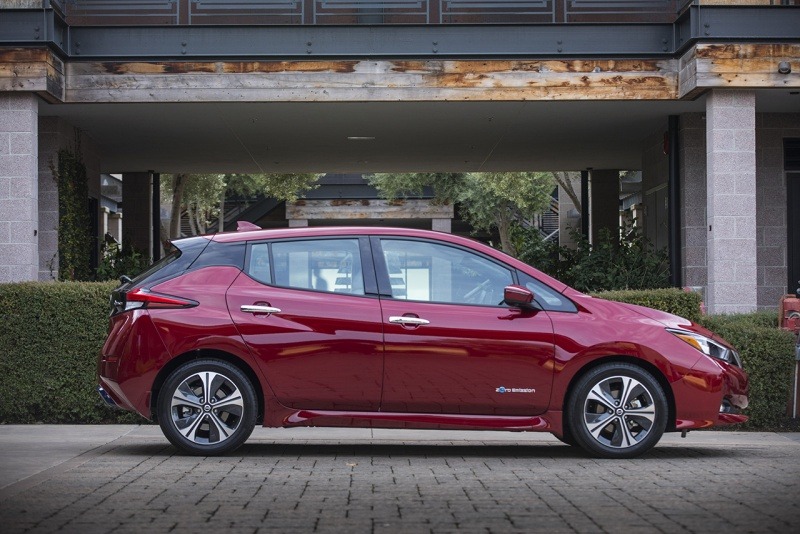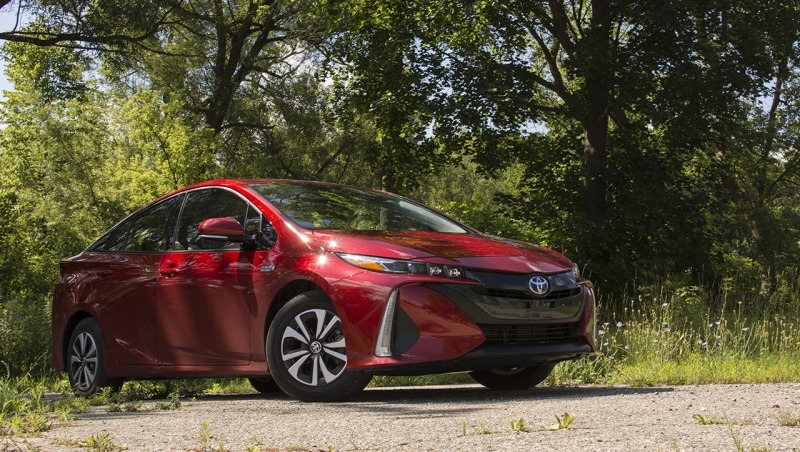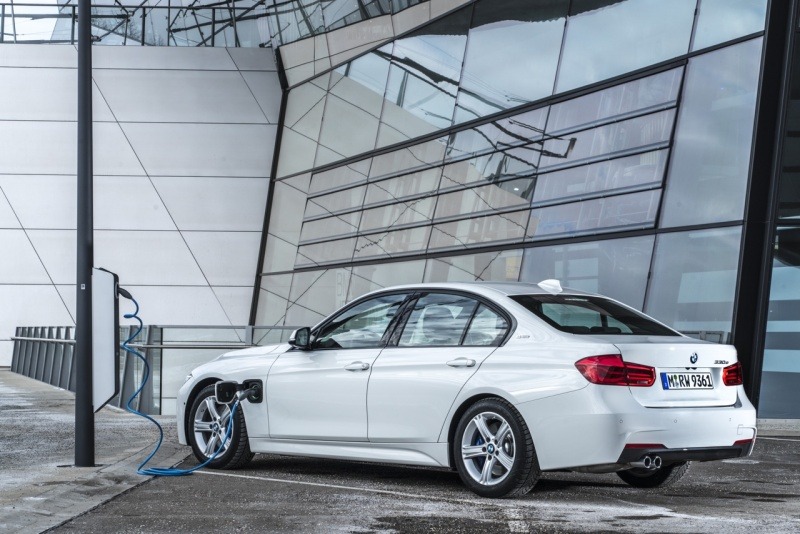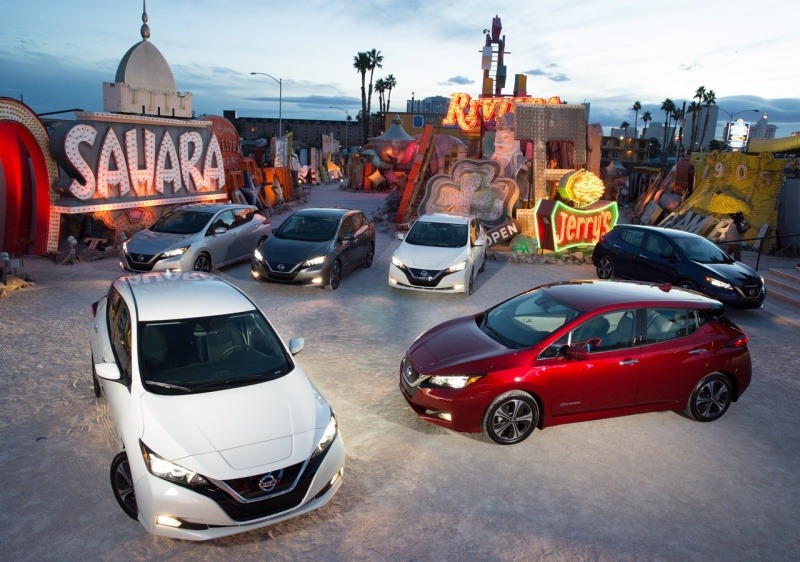Search the Community
Showing results for tags 'EPA'.
-
The EPA has officially released its assessment of the 2020 Jeep Wrangler EcoDiesel. The EcoDiesel is only available as a 4-door with an 8-speed automatic and in that configuration, the EcoDiesel manages to get 29 mpg highway, 22 mpg city, and 25 combined. That is slightly better than a 4x4 Ram 1500 with the same powertrain. The next closest model in terms of fuel efficiency is the 2-door, 4-cylinder, manual transmission, rear-wheel drive Wrangler at 24 highway mpg, 22 city mpg, and 23 combined. The diesel engine is a $4,000 option though so you may not ultimately save money. Instead, Jeep believes the EcoDiesel option is best suited for those who need the gobs of torque generated by the V6 diesel when going off-road. With 260 horsepower and 442 lb.-ft of torque, the Wrangler EcoDiesel has torque in spades. To the dismay of many, the Ecodiesel does come standard with electronic stop/start. If diesel isn't your thing, there is the 2.0T 4-cylinder which produces 270 horsepower and 295 lb.-ft of torque or the 3.6-liter Pentastar V6 which produces 285 horsepower and 260 lb.-ft of torque. Both engines also come with stop/start or can be upgraded to the eTorque system that smooths out the torque band and either engine is available with a manual transmission or 8-speed automatic.
-
The EPA has officially released its assessment of the 2020 Jeep Wrangler EcoDiesel. The EcoDiesel is only available as a 4-door with an 8-speed automatic and in that configuration, the EcoDiesel manages to get 29 mpg highway, 22 mpg city, and 25 combined. That is slightly better than a 4x4 Ram 1500 with the same powertrain. The next closest model in terms of fuel efficiency is the 2-door, 4-cylinder, manual transmission, rear-wheel drive Wrangler at 24 highway mpg, 22 city mpg, and 23 combined. The diesel engine is a $4,000 option though so you may not ultimately save money. Instead, Jeep believes the EcoDiesel option is best suited for those who need the gobs of torque generated by the V6 diesel when going off-road. With 260 horsepower and 442 lb.-ft of torque, the Wrangler EcoDiesel has torque in spades. To the dismay of many, the Ecodiesel does come standard with electronic stop/start. If diesel isn't your thing, there is the 2.0T 4-cylinder which produces 270 horsepower and 295 lb.-ft of torque or the 3.6-liter Pentastar V6 which produces 285 horsepower and 260 lb.-ft of torque. Both engines also come with stop/start or can be upgraded to the eTorque system that smooths out the torque band and either engine is available with a manual transmission or 8-speed automatic. View full article
-
The Ford Explorer hybrid got its EPA ratings finally. They're an improvement over the base 2.3 liter 4-cylinder delivering 27 city, 29 highway, 28 combined for the most efficient RWD model. That is an improvement of 6 mpg for city and 4 mpg combined. The AWD model comes in a bit lower at 23 city, 26 highway, and 25 combined. Unlike the Lincoln Aviator GT, the Ford Explorer Hybrid is not a plug-in model. Powered by a 3.3 liter V6 plus the electrified drive train, the Explorer hybrid has a lot more power than the 4-cylinder with 318 horsepower and 322 lb-ft of torque. It comes with the same 10-speed automatic that all Explorers come with. Compared to the 2.3 liter turbo with 300 hp and 310 lb-ft of torque, we expect the Hybrid to feel faster and more refined due to the extra torque at the low end from the electric motor. The Explorer Hybrid has more power and torque than its only direct competition, the Toyota Highlander Hybrid. The Highlander does slightly better in fuel economy, but comes up 1,500 lbs short in towing capacity, though the next generation Highland Hybrid is supposed to get 34 mpg in front-wheel drive form. The Explorer Hybrid is available as a Limited trim model and starts at $51,780 after delivery charge, a $3,555 increase over an equivalent Limited trim.
-
The Ford Explorer hybrid got its EPA ratings finally. They're an improvement over the base 2.3 liter 4-cylinder delivering 27 city, 29 highway, 28 combined for the most efficient RWD model. That is an improvement of 6 mpg for city and 4 mpg combined. The AWD model comes in a bit lower at 23 city, 26 highway, and 25 combined. Unlike the Lincoln Aviator GT, the Ford Explorer Hybrid is not a plug-in model. Powered by a 3.3 liter V6 plus the electrified drive train, the Explorer hybrid has a lot more power than the 4-cylinder with 318 horsepower and 322 lb-ft of torque. It comes with the same 10-speed automatic that all Explorers come with. Compared to the 2.3 liter turbo with 300 hp and 310 lb-ft of torque, we expect the Hybrid to feel faster and more refined due to the extra torque at the low end from the electric motor. The Explorer Hybrid has more power and torque than its only direct competition, the Toyota Highlander Hybrid. The Highlander does slightly better in fuel economy, but comes up 1,500 lbs short in towing capacity, though the next generation Highland Hybrid is supposed to get 34 mpg in front-wheel drive form. The Explorer Hybrid is available as a Limited trim model and starts at $51,780 after delivery charge, a $3,555 increase over an equivalent Limited trim. View full article
-
The Trump Administration and the EPA officials have scrapped all further talks with California and canceled the $929 million in federal funds for a California high-speed rail project. California's Governor has responded that this is in response to California leading a 16 state coalition challenge to President Trump's national emergency to take funds from the defense department and apply it to building a wall from the Gulf of Mexico to the Pacific Ocean. California has already filed suit to block the Trump administration proposal to roll back federal fuel economy targets for 2022-2025. CARB Chair Mary Nichols is on record that they are willing to work with the auto industry in giving more flexibility to comply with the greenhouse gas limits. This came as the White house administration instructed the EPA to break off talks before Christmas and have not responded to any suggested areas of compromise by California and the 19 states they are representing nor the auto industry suggestions for compromise. While FCA declined to comment, GM and the Alliance for Automobile Manufacturers did not respond to a request for comment. Ford has stated they are very disappointed in the failure of continued talks. Joe Hinrichs, Ford's president of global operations said in a statement: "The auto industry needs regulatory certainty, not protracted litigation." The auto industry is on record as opposing freezing the emissions / fuel efficiency standards to 2020 levels but also want relief from the roughly 5 percent annual carbon reduction targets for all vehicle classes fuel efficiency. View full article
-

EPA ends talks with California and 19 other states
G. David Felt posted an article in Automotive Industry
The Trump Administration and the EPA officials have scrapped all further talks with California and canceled the $929 million in federal funds for a California high-speed rail project. California's Governor has responded that this is in response to California leading a 16 state coalition challenge to President Trump's national emergency to take funds from the defense department and apply it to building a wall from the Gulf of Mexico to the Pacific Ocean. California has already filed suit to block the Trump administration proposal to roll back federal fuel economy targets for 2022-2025. CARB Chair Mary Nichols is on record that they are willing to work with the auto industry in giving more flexibility to comply with the greenhouse gas limits. This came as the White house administration instructed the EPA to break off talks before Christmas and have not responded to any suggested areas of compromise by California and the 19 states they are representing nor the auto industry suggestions for compromise. While FCA declined to comment, GM and the Alliance for Automobile Manufacturers did not respond to a request for comment. Ford has stated they are very disappointed in the failure of continued talks. Joe Hinrichs, Ford's president of global operations said in a statement: "The auto industry needs regulatory certainty, not protracted litigation." The auto industry is on record as opposing freezing the emissions / fuel efficiency standards to 2020 levels but also want relief from the roughly 5 percent annual carbon reduction targets for all vehicle classes fuel efficiency. -

Ford Launching Investigation Into Its Own Emissions Certifications
Drew Dowdell posted an article in Ford
Ford is launching an investigation into its own emissions and fuel economy certification process according to a statement released by the company. The issue was brought to light back in September when a number of employees reported concerns through Ford's internal Speak Up channel. The concern surrounds Road Load, a vehicle-specific resistance level used in dynamometer testing. Too much or too little resistance will alter the results of the emissions and fuel economy. Road load is determined through engineering estimates that are then validated on the track. Ford is evaluating changes to the road load determination process. The company is quick to point out that none of the potential concerns involve the use of defeat devices and that no determination has been made on the need to restate Ford's fuel economy or emissions labels. Ford has hired an outside firm to conduct an investigation into Ford's current processes and has shared their findings with both the EPA and CARB. The first vehicle to be re-evaluated is the 2019 Ford Ranger with others to follow. -
Ford is launching an investigation into its own emissions and fuel economy certification process according to a statement released by the company. The issue was brought to light back in September when a number of employees reported concerns through Ford's internal Speak Up channel. The concern surrounds Road Load, a vehicle-specific resistance level used in dynamometer testing. Too much or too little resistance will alter the results of the emissions and fuel economy. Road load is determined through engineering estimates that are then validated on the track. Ford is evaluating changes to the road load determination process. The company is quick to point out that none of the potential concerns involve the use of defeat devices and that no determination has been made on the need to restate Ford's fuel economy or emissions labels. Ford has hired an outside firm to conduct an investigation into Ford's current processes and has shared their findings with both the EPA and CARB. The first vehicle to be re-evaluated is the 2019 Ford Ranger with others to follow. View full article
-
We noticed there was something missing in the press release of the 2019 Ram 2500 and 3500 HD trucks, a launch date. Sitting on the media room on Monday, both Drew and I found it a bit odd there was no mention of a launch window. Most automakers give a possible idea of when their upcoming vehicle will launch, but nothing from Ram Trucks. We may have the answer as to why. Bloomberg is reporting that the Ram 3500 HD is awaiting emissions certification from the EPA to be approved before it can go on sale. One problem; the U.S. government is currently shut down and leaves the 3500 HD certification, along with other vehicles in limbo. “I am concerned, very concerned, because if it continues, it will have an impact on the launch. The earlier that it can be resolved, clearly the better, and obviously I’m not the only person saying that,” said FCA CEO Mike Manley. Ram has been riding an impressive sales momentum throughout 2018 and outsold the Chevrolet Silverado in fourth quarter sales to place behind the Ford F-Series. This pain inflicted by the shutdown could hurt Ram in terms of 2019 sales. Source: Bloomberg
-
We noticed there was something missing in the press release of the 2019 Ram 2500 and 3500 HD trucks, a launch date. Sitting on the media room on Monday, both Drew and I found it a bit odd there was no mention of a launch window. Most automakers give a possible idea of when their upcoming vehicle will launch, but nothing from Ram Trucks. We may have the answer as to why. Bloomberg is reporting that the Ram 3500 HD is awaiting emissions certification from the EPA to be approved before it can go on sale. One problem; the U.S. government is currently shut down and leaves the 3500 HD certification, along with other vehicles in limbo. “I am concerned, very concerned, because if it continues, it will have an impact on the launch. The earlier that it can be resolved, clearly the better, and obviously I’m not the only person saying that,” said FCA CEO Mike Manley. Ram has been riding an impressive sales momentum throughout 2018 and outsold the Chevrolet Silverado in fourth quarter sales to place behind the Ford F-Series. This pain inflicted by the shutdown could hurt Ram in terms of 2019 sales. Source: Bloomberg View full article
-
As expected, the Environmental Protection Agency (EPA) and National Highway Traffic Safety Administration (NHTSA) have unveiled a proposal that will suspend increases in fuel economy put forth by the Obama administration, and take away California's ability regulate vehicle emissions. The new proposal is called the "Safer Affordable Fuel-Efficient (SAFE) Vehicles Rule." Under the new proposal, the Corporate Average Fuel Economy (CAFE) would be capped at the 2020 level of 37 mpg through 2025. Under the rules that were created during the Obama administration, automakers would need to have a fleet average of 54 mpg in 2026. The proposal would also remove Calfornia's ability to set their own emissions state based on a 1975 federal law that prohibits states from setting their own greenhouse gas limits. It needs to be noted that two federal judges have rejected this argument when it was brought to court. "EPA is proposing to withdraw the waiver granted to California in 2013 for the GHG [Greenhouse Gas] and ZEV [Zero Emissions Vehicles] requirements of its Advanced Clean Cars program," the proposal states. "In short, the agencies propose to maintain one national standard -- a standard that is set exclusively by the Federal government." What are the benefits to this new proposal? The one that has been getting the most headlines is reduced fatalities and crashes. If you're scratching your head as to how this makes sense, here is what the proposal argues. People who buy fuel-efficient vehicle will drive more, increasing the odds that they will get into a crash. Fuel-efficient vehicles will be more expensive, thus slowing down the rate people buy new cars with advanced safety features. Fuel-efficient vehicles tend to be lighter, thus are less capable of withstanding a crash. The proposal claims that this will prevent 12,700 fatalities and many more injuries on American roads. There has been a lot of disagreement on this part, especially on the weight part. While it is true that a heavier vehicle won't sustain as much damage as lighter vehicle, experts have realized that the size of vehicle is more important to overall safety. Plus, the New York Times points out this point only accounts for one percent of the estimated fatalities in the proposal. Other benefits include reduced costs for new vehicles - the proposal says the stricter emission rules add about an average of $2,430 to the price of new vehicles. “We think we can have a win-win, if we lock in at 2020 levels. We’re not imposing undue costs on manufacturers. We’re not imposing undue costs on consumers who want affordable vehicles. And therefore we think as a result of these standards we will be able to have our cake and eat it too,” said Bill Wehrum, the assistant administrator for EPA’s Office of Air and Radiation on a call today. Reactions to this are very mixed. “I applaud the Trump administration for proposing new standards for cars and trucks. Unless the Obama administration’s punishing standards are changed, consumer choice will be limited and the cost of vehicles will skyrocket,” said Senator John Barrasso (R-WY), chairman of the Senate Environment and Public Works Committee. "Automakers support continued improvements in fuel economy and flexibilities that incentivize advanced technologies while balancing priorities like affordability, safety, jobs, and the environment," said the Alliance of Automobile Manufacturers and and the Association of Global Automakers in a statement. "The administration's effort to roll back these standards is a denial of basic science and a denial of American automakers' engineering capabilities and ingenuity," said John M. DeCicco, research professor at the University of Michigan Energy Institute. "This was a predictable move, as the current administration has been working hard to dismantle Obama-era regulations across the board. And while there's little demand today for smaller, more-efficient or electrified vehicles in the U.S., as gas prices remain low, these lower fuel economy targets proposed by the administration will likely spark an unwanted war between Washington and the California Air Resources Board. While few stakeholders were happy with the tough targets in the current regulations, unraveling those standards will likely be even more painful," said Michelle Krebs, executive analyst at Autotrader. Unsurprisingly, California is not pleased by this new proposal. The state along with 18 others and the District of Columbia have announced they would challenge the proposal in court. “The Trump Administration has launched a brazen attack, no matter how it is cloaked, on our nation’s Clean Car Standards,” said Xavier Becerra, California’s attorney general. California “will use every legal tool at its disposal to defend today’s national standards and reaffirm the facts and science behind them.” California Governor Jerry Brown was more blunt in his reaction to this, "California will fight this stupidity in every conceivable way possible.” A legal fight could mean a lot of headaches for automakers as it might result in two different emission standards they would have to meet. "With today's release of the Administration's proposals, it's time for substantive negotiations to begin. We urge California and the federal government to find a common sense solution that sets continued increases in vehicle efficiency standards while also meeting the needs of America's drivers," said the Alliance of Automobile Manufacturers and and the Association of Global Automakers. The next step is giving the public 60 days to comment on this proposal. Source: Bloomberg, New York Times, (2), Reuters, EPA U.S. EPA and DOT Propose Fuel Economy Standards for MY 2021-2026 Vehicles WASHINGTON — Today, the U.S. Environmental Protection Agency (EPA) and U.S. Department of Transportation’s National Highway Traffic Safety Administration (NHTSA) released a notice of proposed rulemaking, the Safer Affordable Fuel-Efficient (SAFE) Vehicles Rule for Model Years 2021-2026 Passenger Cars and Light Trucks (SAFE Vehicles Rule), to correct the national automobile fuel economy and greenhouse gas emissions standards to give the American people greater access to safer, more affordable vehicles that are cleaner for the environment. The SAFE Vehicles Rule is the next generation of the Congressionally mandated Corporate Average Fuel Economy (CAFE) and Light-Duty Vehicle Greenhouse Gas Emissions Standards. This Notice of Proposed Rulemaking (NPRM) is the first formal step in setting the 2021-2026 Model Year (MY) standards that must be achieved by each automaker for its car and light-duty truck fleet. In today’s proposal, EPA and NHTSA are seeking public comment on a wide range of regulatory options, including a preferred alternative that locks in MY 2020 standards through 2026, providing a much-needed time-out from further, costly increases. The agencies’ preferred alternative reflects a balance of safety, economics, technology, fuel conservation, and pollution reduction. It is anticipated to prevent thousands of on-road fatalities and injuries as compared to the standards set forth in the 2012 final rule. The joint proposal initiates a process to establish a new 50-state fuel economy and tailpipe carbon dioxide emissions standard for passenger cars and light trucks covering MY 2021 through 2026. “We are delivering on President Trump’s promise to the American public that his administration would address and fix the current fuel economy and greenhouse gas emissions standards,” said EPA Acting Administrator Andrew Wheeler. “Our proposal aims to strike the right regulatory balance based on the most recent information and create a 50-state solution that will enable more Americans to afford newer, safer vehicles that pollute less. More realistic standards can save lives while continuing to improve the environment. We value the public’s input as we engage in this process in an open, transparent manner.” “There are compelling reasons for a new rulemaking on fuel economy standards for 2021-2026,” said Secretary Elaine L. Chao. “More realistic standards will promote a healthy economy by bringing newer, safer, cleaner and more fuel-efficient vehicles to U.S. roads and we look forward to receiving input from the public.” The current standards have been a factor in the rising cost of new automobiles to an average of $35,000 or more—out of reach for many American families. Indeed, compared to the preferred alternative in the proposal, keeping in place the standards finalized in 2012 would add $2,340 to the cost of owning a new car, and impose more than $500 billion in societal costs on the U.S. economy over the next 50 years. Additionally, a 2018 government study by NHTSA shows new model year vehicles are safer, resulting in fewer deaths and injuries when involved in accidents, as compared to older models. Therefore, the Administration is focused on correcting the current standards that restrict the American people from being able to afford newer vehicles with more advanced safety features, better fuel economy, and associated environmental benefits. On April 2, 2018, EPA issued the Mid-Term Evaluation Final Determination which found that the MY 2022-2025 GHG standards are not appropriate and should be revised. For more than a year, the agencies worked together to extensively analyze current automotive and fuel technologies, reviewed economic conditions and projections, and consulted with other federal agency partners to ensure the most reliable and accurate analysis possible. EPA and NHTSA are seeking public feedback to ensure that all potential impacts concerning today’s proposal are fully considered and hope to issue a final rule this winter. The public will have 60 days to provide feedback once published at the Federal Register
- 40 comments
-
- california
- emissions
-
(and 4 more)
Tagged with:
-
As expected, the Environmental Protection Agency (EPA) and National Highway Traffic Safety Administration (NHTSA) have unveiled a proposal that will suspend increases in fuel economy put forth by the Obama administration, and take away California's ability regulate vehicle emissions. The new proposal is called the "Safer Affordable Fuel-Efficient (SAFE) Vehicles Rule." Under the new proposal, the Corporate Average Fuel Economy (CAFE) would be capped at the 2020 level of 37 mpg through 2025. Under the rules that were created during the Obama administration, automakers would need to have a fleet average of 54 mpg in 2026. The proposal would also remove Calfornia's ability to set their own emissions state based on a 1975 federal law that prohibits states from setting their own greenhouse gas limits. It needs to be noted that two federal judges have rejected this argument when it was brought to court. "EPA is proposing to withdraw the waiver granted to California in 2013 for the GHG [Greenhouse Gas] and ZEV [Zero Emissions Vehicles] requirements of its Advanced Clean Cars program," the proposal states. "In short, the agencies propose to maintain one national standard -- a standard that is set exclusively by the Federal government." What are the benefits to this new proposal? The one that has been getting the most headlines is reduced fatalities and crashes. If you're scratching your head as to how this makes sense, here is what the proposal argues. People who buy fuel-efficient vehicle will drive more, increasing the odds that they will get into a crash. Fuel-efficient vehicles will be more expensive, thus slowing down the rate people buy new cars with advanced safety features. Fuel-efficient vehicles tend to be lighter, thus are less capable of withstanding a crash. The proposal claims that this will prevent 12,700 fatalities and many more injuries on American roads. There has been a lot of disagreement on this part, especially on the weight part. While it is true that a heavier vehicle won't sustain as much damage as lighter vehicle, experts have realized that the size of vehicle is more important to overall safety. Plus, the New York Times points out this point only accounts for one percent of the estimated fatalities in the proposal. Other benefits include reduced costs for new vehicles - the proposal says the stricter emission rules add about an average of $2,430 to the price of new vehicles. “We think we can have a win-win, if we lock in at 2020 levels. We’re not imposing undue costs on manufacturers. We’re not imposing undue costs on consumers who want affordable vehicles. And therefore we think as a result of these standards we will be able to have our cake and eat it too,” said Bill Wehrum, the assistant administrator for EPA’s Office of Air and Radiation on a call today. Reactions to this are very mixed. “I applaud the Trump administration for proposing new standards for cars and trucks. Unless the Obama administration’s punishing standards are changed, consumer choice will be limited and the cost of vehicles will skyrocket,” said Senator John Barrasso (R-WY), chairman of the Senate Environment and Public Works Committee. "Automakers support continued improvements in fuel economy and flexibilities that incentivize advanced technologies while balancing priorities like affordability, safety, jobs, and the environment," said the Alliance of Automobile Manufacturers and and the Association of Global Automakers in a statement. "The administration's effort to roll back these standards is a denial of basic science and a denial of American automakers' engineering capabilities and ingenuity," said John M. DeCicco, research professor at the University of Michigan Energy Institute. "This was a predictable move, as the current administration has been working hard to dismantle Obama-era regulations across the board. And while there's little demand today for smaller, more-efficient or electrified vehicles in the U.S., as gas prices remain low, these lower fuel economy targets proposed by the administration will likely spark an unwanted war between Washington and the California Air Resources Board. While few stakeholders were happy with the tough targets in the current regulations, unraveling those standards will likely be even more painful," said Michelle Krebs, executive analyst at Autotrader. Unsurprisingly, California is not pleased by this new proposal. The state along with 18 others and the District of Columbia have announced they would challenge the proposal in court. “The Trump Administration has launched a brazen attack, no matter how it is cloaked, on our nation’s Clean Car Standards,” said Xavier Becerra, California’s attorney general. California “will use every legal tool at its disposal to defend today’s national standards and reaffirm the facts and science behind them.” California Governor Jerry Brown was more blunt in his reaction to this, "California will fight this stupidity in every conceivable way possible.” A legal fight could mean a lot of headaches for automakers as it might result in two different emission standards they would have to meet. "With today's release of the Administration's proposals, it's time for substantive negotiations to begin. We urge California and the federal government to find a common sense solution that sets continued increases in vehicle efficiency standards while also meeting the needs of America's drivers," said the Alliance of Automobile Manufacturers and and the Association of Global Automakers. The next step is giving the public 60 days to comment on this proposal. Source: Bloomberg, New York Times, (2), Reuters, EPA U.S. EPA and DOT Propose Fuel Economy Standards for MY 2021-2026 Vehicles WASHINGTON — Today, the U.S. Environmental Protection Agency (EPA) and U.S. Department of Transportation’s National Highway Traffic Safety Administration (NHTSA) released a notice of proposed rulemaking, the Safer Affordable Fuel-Efficient (SAFE) Vehicles Rule for Model Years 2021-2026 Passenger Cars and Light Trucks (SAFE Vehicles Rule), to correct the national automobile fuel economy and greenhouse gas emissions standards to give the American people greater access to safer, more affordable vehicles that are cleaner for the environment. The SAFE Vehicles Rule is the next generation of the Congressionally mandated Corporate Average Fuel Economy (CAFE) and Light-Duty Vehicle Greenhouse Gas Emissions Standards. This Notice of Proposed Rulemaking (NPRM) is the first formal step in setting the 2021-2026 Model Year (MY) standards that must be achieved by each automaker for its car and light-duty truck fleet. In today’s proposal, EPA and NHTSA are seeking public comment on a wide range of regulatory options, including a preferred alternative that locks in MY 2020 standards through 2026, providing a much-needed time-out from further, costly increases. The agencies’ preferred alternative reflects a balance of safety, economics, technology, fuel conservation, and pollution reduction. It is anticipated to prevent thousands of on-road fatalities and injuries as compared to the standards set forth in the 2012 final rule. The joint proposal initiates a process to establish a new 50-state fuel economy and tailpipe carbon dioxide emissions standard for passenger cars and light trucks covering MY 2021 through 2026. “We are delivering on President Trump’s promise to the American public that his administration would address and fix the current fuel economy and greenhouse gas emissions standards,” said EPA Acting Administrator Andrew Wheeler. “Our proposal aims to strike the right regulatory balance based on the most recent information and create a 50-state solution that will enable more Americans to afford newer, safer vehicles that pollute less. More realistic standards can save lives while continuing to improve the environment. We value the public’s input as we engage in this process in an open, transparent manner.” “There are compelling reasons for a new rulemaking on fuel economy standards for 2021-2026,” said Secretary Elaine L. Chao. “More realistic standards will promote a healthy economy by bringing newer, safer, cleaner and more fuel-efficient vehicles to U.S. roads and we look forward to receiving input from the public.” The current standards have been a factor in the rising cost of new automobiles to an average of $35,000 or more—out of reach for many American families. Indeed, compared to the preferred alternative in the proposal, keeping in place the standards finalized in 2012 would add $2,340 to the cost of owning a new car, and impose more than $500 billion in societal costs on the U.S. economy over the next 50 years. Additionally, a 2018 government study by NHTSA shows new model year vehicles are safer, resulting in fewer deaths and injuries when involved in accidents, as compared to older models. Therefore, the Administration is focused on correcting the current standards that restrict the American people from being able to afford newer vehicles with more advanced safety features, better fuel economy, and associated environmental benefits. On April 2, 2018, EPA issued the Mid-Term Evaluation Final Determination which found that the MY 2022-2025 GHG standards are not appropriate and should be revised. For more than a year, the agencies worked together to extensively analyze current automotive and fuel technologies, reviewed economic conditions and projections, and consulted with other federal agency partners to ensure the most reliable and accurate analysis possible. EPA and NHTSA are seeking public feedback to ensure that all potential impacts concerning today’s proposal are fully considered and hope to issue a final rule this winter. The public will have 60 days to provide feedback once published at the Federal Register View full article
- 40 replies
-
- california
- emissions
-
(and 4 more)
Tagged with:
-

EPA Doubted Claims of New Fuel Economy Regs Would Save Lives
William Maley posted an article in Automotive Industry
When the EPA and NHTSA unveiled the proposal for revised fuel economy standards, there was a key part that brought up a lot of debate: The claim that the new regulations would reduce the number of fatalities and crashes. As we pointed out in our story, there were a number of holes in that argument. It seems we were not the only ones questioning this. Yesterday, the review of the proposal done by the White House's Information and Regulatory Affairs was made public. In it are hundred of pages of correspondence, analysis, and drafts. Bloomberg went through the documents and found that EPA officials were questioning the rationale put forth by NHTSA on reducing crashes. The “proposed standards are detrimental to safety, rather than beneficial,” wrote EPA staff in a memo dated June 18th. Their basis for this was analysis done by the agency after making a number of corrections to a Transportation Department model. It showed that freezing fuel economy standards "would lead to an increase in traffic fatalities and boost the overall fatality rate." The EPA questioned the validity of the Obama administration standards “coincided with an increase in highway fatalities” claim. “What data supports the implication that the standards to date have led to fatality increases?” said the EPA in feedback on June 29th. Also, the EPA questioned NHTSA's model that overestimates the number of old and unsafe vehicles on the road if the new regulations go into effect. How the EPA and NHTSA came to an agreement is unclear at the moment. What it does reveal is that the dispute between the two agencies could affect plans to try and create a comprise that would appease both automakers and California regulators. “These emails are but a fraction of the robust dialogue that occurred during interagency deliberations for the proposed rule. EPA is currently soliciting comments on eight different alternative standards and we look forward to reviewing any new data and information,” said EPA spokesman John Konkus. Irene Gutierrez, an attorney with the Natural Resources Defense Council sees it a bit differently. "...that even the EPA had deep reservations about the bogus safety arguments being pushed by the Department of Transportation. We know that automakers can make cars both more fuel efficient and safer; it’s heartening to find out EPA’s technical experts agree.” Source: Bloomberg- 21 comments
-
- disagreement
- epa
-
(and 2 more)
Tagged with:
-
When the EPA and NHTSA unveiled the proposal for revised fuel economy standards, there was a key part that brought up a lot of debate: The claim that the new regulations would reduce the number of fatalities and crashes. As we pointed out in our story, there were a number of holes in that argument. It seems we were not the only ones questioning this. Yesterday, the review of the proposal done by the White House's Information and Regulatory Affairs was made public. In it are hundred of pages of correspondence, analysis, and drafts. Bloomberg went through the documents and found that EPA officials were questioning the rationale put forth by NHTSA on reducing crashes. The “proposed standards are detrimental to safety, rather than beneficial,” wrote EPA staff in a memo dated June 18th. Their basis for this was analysis done by the agency after making a number of corrections to a Transportation Department model. It showed that freezing fuel economy standards "would lead to an increase in traffic fatalities and boost the overall fatality rate." The EPA questioned the validity of the Obama administration standards “coincided with an increase in highway fatalities” claim. “What data supports the implication that the standards to date have led to fatality increases?” said the EPA in feedback on June 29th. Also, the EPA questioned NHTSA's model that overestimates the number of old and unsafe vehicles on the road if the new regulations go into effect. How the EPA and NHTSA came to an agreement is unclear at the moment. What it does reveal is that the dispute between the two agencies could affect plans to try and create a comprise that would appease both automakers and California regulators. “These emails are but a fraction of the robust dialogue that occurred during interagency deliberations for the proposed rule. EPA is currently soliciting comments on eight different alternative standards and we look forward to reviewing any new data and information,” said EPA spokesman John Konkus. Irene Gutierrez, an attorney with the Natural Resources Defense Council sees it a bit differently. "...that even the EPA had deep reservations about the bogus safety arguments being pushed by the Department of Transportation. We know that automakers can make cars both more fuel efficient and safer; it’s heartening to find out EPA’s technical experts agree.” Source: Bloomberg View full article
- 21 replies
-
- disagreement
- epa
-
(and 2 more)
Tagged with:
-
Fuel efficiency guidelines and California's right to set its own vehicle emissions standards are in the crosshairs of the Trump administration again. Bloomberg has learned from sources that the administration will be introducing a proposal later this week that revises key parts of the Obama-era standards. This includes capping federal fuel economy requirements at 2020 level of 35 mpg fleet wide, instead of the 50 mpg requirement by 2025. There is also a provision that would revoke the Clean Air Act waiver given to California that allows it to set its own emission regulations. Sources go onto say that the proposal is in the final stages of a "broad interagency review" being done by the Office of Management and Budget. These changes were first introduced back in April and got massive pushback from various environmental groups, along with the state of California. A month later, a coalition made up of California, Washington D.C. and sixteen other states filed suit against the rollback. Automakers who pushed for the rollback began to panic as this could result in two different emission regulations they would have to meet. Source: Bloomberg View full article
- 61 replies
-
- emission regulations
- epa
-
(and 2 more)
Tagged with:
-
Fuel efficiency guidelines and California's right to set its own vehicle emissions standards are in the crosshairs of the Trump administration again. Bloomberg has learned from sources that the administration will be introducing a proposal later this week that revises key parts of the Obama-era standards. This includes capping federal fuel economy requirements at 2020 level of 35 mpg fleet wide, instead of the 50 mpg requirement by 2025. There is also a provision that would revoke the Clean Air Act waiver given to California that allows it to set its own emission regulations. Sources go onto say that the proposal is in the final stages of a "broad interagency review" being done by the Office of Management and Budget. These changes were first introduced back in April and got massive pushback from various environmental groups, along with the state of California. A month later, a coalition made up of California, Washington D.C. and sixteen other states filed suit against the rollback. Automakers who pushed for the rollback began to panic as this could result in two different emission regulations they would have to meet. Source: Bloomberg
- 61 comments
-
- emission regulations
- epa
-
(and 2 more)
Tagged with:
-
The past month has been quite strenuous on the relationship between the Environmental Protection Agency and the State of California. Back in April, EPA chief Scott Pruitt announced they would be rolling back the fuel-efficiency regulations set towards the end of President Obama's tenure. The EPA also announced that it was considering revoking California's waiver to set their own emission standards. A few days later, we reported that the officials from the White House, California, and automakers were trying to work out a possible emissions deal to prevent a legal fight. It seems those talks went nowhere as California along with sixteen other states and the District of Columbia have filed suit challenging the rollback. On Tuesday, the collation led by California filed a suit in the U.S. Court of Appeals for the District of Columbia challenging the rollback. This group makes up 40 percent of the U.S. auto market. "The states joining today's lawsuit represent 140 million people who simply want cleaner and more efficient cars. This phalanx of states will defend the nation's clean car standards to boost gas mileage and curb toxic air pollution," said California Governor Jerry Brown in a statement. The suit alleges that the EPA decision to roll back the regulation lacked any scientific reason. The EPA is also accused of failing to follow its own regulations and violating the Clean Air Act. “This is California saying: You really want war? We’ll give you war. It’s a signal to the administration that they’re not going to get away with anything in this space,” said Dan Becker, director of the Safe Climate Campaign to the New York Times. According to Reuters, the Department of Transportation has a draft proposal of the changes that is expected to be released to the public later this month. The draft would freeze emission requirements for vehicles at 2020 levels through 2026. The draft also asserts that the Energy Policy and Conservation Act of 1975 bars California from imposing their own rules, even with the waiver. This proposal has already earned the ire of the public and various members of the U.S. Senate. One Senator, Tom Carper, D-Delaware obtained a copy of the proposal and sent a scathing letter to Transportation Secretary Elaine L. Chao and Pruitt. “Such a proposal, if finalized, would harm U.S. national and economic security, undermine efforts to combat global warming pollution, create regulatory and manufacturing uncertainty for the automobile industry and unnecessary litigation, increase the amount of gasoline consumers would have to buy, and runs counter to statements that both of you have made to Members of Congress,” wrote Carper. There is a lot riding on this suit as it could possibly cause the U.S. to have two different emission regulations and automakers having to meet both of them. "Enough is enough. We're not looking to pick a fight with the Trump administration, but when the stakes are this high for our families' health and our economic prosperity, we have a responsibility to do what is necessary to defend them," said Xavier Becerra, California state attorney general. Yesterday, the White House announced that it will be meeting with leaders of the major automakers next week. The meeting will be talking about the planned changes to the fuel efficiency rules. It is expected that automakers will be trying to push the Trump administration and California to agree to a national standard. Source: New York Times, Roadshow, Reuters, (2), U.S. Senate (Carper's Letter)
- 9 comments
-
- california
- epa
-
(and 2 more)
Tagged with:
-
We all know someone who takes things a bit a too far. In the case of automakers, that someone is EPA Administrator Scott Pruitt. Back in April April, Pruitt announced a serious rollback of fuel economy regulations that were set in stone during the Obama administration. In a summary of the proposed draft, the EPA would rollback the fleetwide average from 46.8 mpg for the 2026 model year to around 37 mpg - the fleetwide average for the 2020 model year. The draft also mentions pre-empting "California's authority" on setting their own emission standards under the 1975 Energy Policy and Conservation Act. This move has caused California and a collation of other states to file suit over the proposed changes. According to Automotive News, the changes proposed by Pruitt go a bit too far for automakers. All they wanted was the emission targets for the 2022-2025 model years to "ratchet up more gradually and offer more compliance flexibility." Now, they have to worry about litigation and uncertainty. "I don't think anybody in industry, when asked for reopening of standards, asked to level out to zero," said an unnamed lobbyist for a major automaker. However, certain groups argue that automakers should have expected something far-reaching under this current administration. "You've got to know your audience. If you go to [EPA Administrator] Scott Pruitt and Donald Trump and say you want relief from the rules and they are going to cost jobs, this is what you end up with," said Andrew Linhardt, deputy director of the Sierra Club's clean energy campaign. Later this week, executives from the major automakers will be meeting with officials at the White House to see if they can get the federal government and California to agree to some sort of comprise. Source: Automotive News (Subscription Required)
- 12 comments
-
- automakers
- changes
-
(and 3 more)
Tagged with:
-
We all know someone who takes things a bit a too far. In the case of automakers, that someone is EPA Administrator Scott Pruitt. Back in April April, Pruitt announced a serious rollback of fuel economy regulations that were set in stone during the Obama administration. In a summary of the proposed draft, the EPA would rollback the fleetwide average from 46.8 mpg for the 2026 model year to around 37 mpg - the fleetwide average for the 2020 model year. The draft also mentions pre-empting "California's authority" on setting their own emission standards under the 1975 Energy Policy and Conservation Act. This move has caused California and a collation of other states to file suit over the proposed changes. According to Automotive News, the changes proposed by Pruitt go a bit too far for automakers. All they wanted was the emission targets for the 2022-2025 model years to "ratchet up more gradually and offer more compliance flexibility." Now, they have to worry about litigation and uncertainty. "I don't think anybody in industry, when asked for reopening of standards, asked to level out to zero," said an unnamed lobbyist for a major automaker. However, certain groups argue that automakers should have expected something far-reaching under this current administration. "You've got to know your audience. If you go to [EPA Administrator] Scott Pruitt and Donald Trump and say you want relief from the rules and they are going to cost jobs, this is what you end up with," said Andrew Linhardt, deputy director of the Sierra Club's clean energy campaign. Later this week, executives from the major automakers will be meeting with officials at the White House to see if they can get the federal government and California to agree to some sort of comprise. Source: Automotive News (Subscription Required) View full article
- 12 replies
-
- automakers
- changes
-
(and 3 more)
Tagged with:
-
Earlier this week, the Environmental Protection Agency announced that it would be rolling back the fuel-efficiency regulations that were approved during the Obama administration. The agency also announced possibly revoking California's waiver that allows it to set tougher standards on vehicle emissions. The state vowed to fight this. But a new report from the New York Times says California and officials from the Trump administration are in talks about possibly reaching a deal to avoid a legal fight. Speaking to a half-dozen of sources briefed about the talks, the Times reports that the two parties, along with representatives of major automakers, "are searching for a compromise that could save a uniform set of standards for the entire country." One of the proposals on the table is to keep the Obama fuel economy standards, but allow automakers to take advantage of more generous loopholes to meet them. In turn, the Trump administration would honor California's wavier through 2030. There could be other proposals in the cards as the EPA, National Highway Traffic Safety Administration, and the White House begin to coordinate their various strategies. There are a number of obstacles that could derail the talks. Various automakers "are in different positions” on how to proceed with the talks. According to a source, some are focused on rolling back the standards through 2025, while others want to have the discussion to reach a compromise to avoid having to build vehicles to different standards. The talks themselves seem to be spinning their wheels. Last week, William Wehrum, the EPA's senior clean air adviser met with Mary D. Nichols, chairwoman of the California Air Resources Board. Depending on who you ask, the meeting didn't amount to anything or was considered to be productive. Source: New York Times View full article
- 27 replies
-
- california
- epa
-
(and 2 more)
Tagged with:
-
Earlier this week, the Environmental Protection Agency announced that it would be rolling back the fuel-efficiency regulations that were approved during the Obama administration. The agency also announced possibly revoking California's waiver that allows it to set tougher standards on vehicle emissions. The state vowed to fight this. But a new report from the New York Times says California and officials from the Trump administration are in talks about possibly reaching a deal to avoid a legal fight. Speaking to a half-dozen of sources briefed about the talks, the Times reports that the two parties, along with representatives of major automakers, "are searching for a compromise that could save a uniform set of standards for the entire country." One of the proposals on the table is to keep the Obama fuel economy standards, but allow automakers to take advantage of more generous loopholes to meet them. In turn, the Trump administration would honor California's wavier through 2030. There could be other proposals in the cards as the EPA, National Highway Traffic Safety Administration, and the White House begin to coordinate their various strategies. There are a number of obstacles that could derail the talks. Various automakers "are in different positions” on how to proceed with the talks. According to a source, some are focused on rolling back the standards through 2025, while others want to have the discussion to reach a compromise to avoid having to build vehicles to different standards. The talks themselves seem to be spinning their wheels. Last week, William Wehrum, the EPA's senior clean air adviser met with Mary D. Nichols, chairwoman of the California Air Resources Board. Depending on who you ask, the meeting didn't amount to anything or was considered to be productive. Source: New York Times
- 27 comments
-
- california
- epa
-
(and 2 more)
Tagged with:
-
EPA - Fuels New Standard - Premium? Current administration has been doing everything they can to gut the EPA even though Auto companies have stated just push out the MPG standard till 2030 or so giving us time to delivery the results. Yet with that, the auto industry is trying to get onboard with Europe to a single standard. In Europe, 95 RON is their baseline fuel standard. This is equal to our 91 octane and while we have a 40 to 50 cent premium standard for 91 octane fuel, this only makes up 11% of the gas produced in the US. Making 91 the new base standard would increase gas creation resulting in lower prices for that gas and cleaner running engines along with a 3-4% increase in fuel economy for new Auto's. The story does say that you would not see a drop right away overnight but over a couple of years in the price of premium. This brings up some interesting questions: What about the cost hit to the lower income parts of society? Could they handle seeing a hit to buy gas as automakers stop producing auto's that run on regular or mid grade? Could they just drop Mid grade and like Costco, offer only regular or premium at the same price to help transition people to Premium autos everywhere? What else could be done to help with a change to a superior fuel? The Drive Story
- 2 replies
-
- epa
- premium fuel
-
(and 1 more)
Tagged with:
-
The past month has been quite strenuous on the relationship between the Environmental Protection Agency and the State of California. Back in April, EPA chief Scott Pruitt announced they would be rolling back the fuel-efficiency regulations set towards the end of President Obama's tenure. The EPA also announced that it was considering revoking California's waiver to set their own emission standards. A few days later, we reported that the officials from the White House, California, and automakers were trying to work out a possible emissions deal to prevent a legal fight. It seems those talks went nowhere as California along with sixteen other states and the District of Columbia have filed suit challenging the rollback. On Tuesday, the collation led by California filed a suit in the U.S. Court of Appeals for the District of Columbia challenging the rollback. This group makes up 40 percent of the U.S. auto market. "The states joining today's lawsuit represent 140 million people who simply want cleaner and more efficient cars. This phalanx of states will defend the nation's clean car standards to boost gas mileage and curb toxic air pollution," said California Governor Jerry Brown in a statement. The suit alleges that the EPA decision to roll back the regulation lacked any scientific reason. The EPA is also accused of failing to follow its own regulations and violating the Clean Air Act. “This is California saying: You really want war? We’ll give you war. It’s a signal to the administration that they’re not going to get away with anything in this space,” said Dan Becker, director of the Safe Climate Campaign to the New York Times. According to Reuters, the Department of Transportation has a draft proposal of the changes that is expected to be released to the public later this month. The draft would freeze emission requirements for vehicles at 2020 levels through 2026. The draft also asserts that the Energy Policy and Conservation Act of 1975 bars California from imposing their own rules, even with the waiver. This proposal has already earned the ire of the public and various members of the U.S. Senate. One Senator, Tom Carper, D-Delaware obtained a copy of the proposal and sent a scathing letter to Transportation Secretary Elaine L. Chao and Pruitt. “Such a proposal, if finalized, would harm U.S. national and economic security, undermine efforts to combat global warming pollution, create regulatory and manufacturing uncertainty for the automobile industry and unnecessary litigation, increase the amount of gasoline consumers would have to buy, and runs counter to statements that both of you have made to Members of Congress,” wrote Carper. There is a lot riding on this suit as it could possibly cause the U.S. to have two different emission regulations and automakers having to meet both of them. "Enough is enough. We're not looking to pick a fight with the Trump administration, but when the stakes are this high for our families' health and our economic prosperity, we have a responsibility to do what is necessary to defend them," said Xavier Becerra, California state attorney general. Yesterday, the White House announced that it will be meeting with leaders of the major automakers next week. The meeting will be talking about the planned changes to the fuel efficiency rules. It is expected that automakers will be trying to push the Trump administration and California to agree to a national standard. Source: New York Times, Roadshow, Reuters, (2), U.S. Senate (Carper's Letter) View full article
- 9 replies
-
- california
- epa
-
(and 2 more)
Tagged with:
-
In a move that was expected to happen soon, the EPA announced that it plans to revise the fuel-efficiency regulations that were approved during the President Obama administration. “The Obama EPA’s determination was wrong. Obama’s EPA cut the midterm evaluation process short with politically charged expediency, made assumptions about the standards that didn’t comport with reality and set the standards too high,” said EPA chief Scott Pruitt in a statement today. The statement goes on to say that the agency will begin working on new standards for cars for 2022-2025 with the National Highway Traffic Safety Administration. The regulations that were finalized during Obama's tenure would require automakers to have fuel economy fleet average of over 50 mpg by 2025. Automakers have been pushing for the standards to be rolled back as it would cause vehicles to become more expensive, and consumers aren't buying fuel-efficient vehicles. “This was the right decision. To ensure ongoing fuel economy improvement, the wisest course of action is to keep new vehicles affordable so more consumers can replace an older car with a new vehicle that uses much less fuel -- and offers more safety features," said Gloria Bergquist, a spokeswoman for the Alliance of Automobile Manufacturers - a trade group that represents a dozen automakers including GM and Ford. Unsurprisingly, this move has brought forth criticism from both consumer and environmental groups. “EPA’s decision defies the robust record and years of review that show these targets are reasonable and appropriate,” said David Friedman, director of cars and products policy and analysis for Consumers Union, the advocacy division of Consumer Reports. “Undermining these consumer protections will cost consumers more at the pump while fulfilling the wishes of the auto industry.” The EPA also announced that it was considering revoking California's waiver that allows it to set its own emission rules that are tougher than the federal regulations. Aside from California, 12 other states have adopted these standards that together account for a third of car sales in the U.S. Since President Donald Trump entered the white house, the relationship between the EPA and California has become very strained. California officials have vowed to fight back if the EPA goes forward. Source: Automotive News (Subscription Required) View full article
- 54 replies
-
- 1
-

-
- epa
- fuel economy
-
(and 2 more)
Tagged with:
-
In a move that was expected to happen soon, the EPA announced that it plans to revise the fuel-efficiency regulations that were approved during the President Obama administration. “The Obama EPA’s determination was wrong. Obama’s EPA cut the midterm evaluation process short with politically charged expediency, made assumptions about the standards that didn’t comport with reality and set the standards too high,” said EPA chief Scott Pruitt in a statement today. The statement goes on to say that the agency will begin working on new standards for cars for 2022-2025 with the National Highway Traffic Safety Administration. The regulations that were finalized during Obama's tenure would require automakers to have fuel economy fleet average of over 50 mpg by 2025. Automakers have been pushing for the standards to be rolled back as it would cause vehicles to become more expensive, and consumers aren't buying fuel-efficient vehicles. “This was the right decision. To ensure ongoing fuel economy improvement, the wisest course of action is to keep new vehicles affordable so more consumers can replace an older car with a new vehicle that uses much less fuel -- and offers more safety features," said Gloria Bergquist, a spokeswoman for the Alliance of Automobile Manufacturers - a trade group that represents a dozen automakers including GM and Ford. Unsurprisingly, this move has brought forth criticism from both consumer and environmental groups. “EPA’s decision defies the robust record and years of review that show these targets are reasonable and appropriate,” said David Friedman, director of cars and products policy and analysis for Consumers Union, the advocacy division of Consumer Reports. “Undermining these consumer protections will cost consumers more at the pump while fulfilling the wishes of the auto industry.” The EPA also announced that it was considering revoking California's waiver that allows it to set its own emission rules that are tougher than the federal regulations. Aside from California, 12 other states have adopted these standards that together account for a third of car sales in the U.S. Since President Donald Trump entered the white house, the relationship between the EPA and California has become very strained. California officials have vowed to fight back if the EPA goes forward. Source: Automotive News (Subscription Required)
- 54 comments
-
- epa
- fuel economy
-
(and 2 more)
Tagged with:


